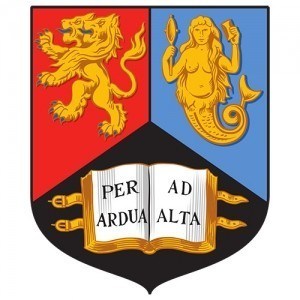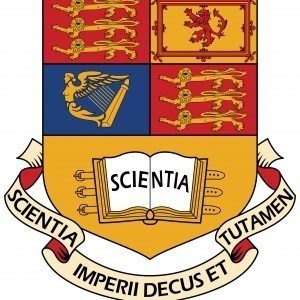Photos of university / #unibirmingham
History of Art Joint Honours at the University of Birmingham offers a comprehensive exploration of art, architecture, and visual culture from ancient times to the present day. This interdisciplinary programme combines rigorous academic study with critical analysis, encouraging students to develop a deep understanding of the historical, cultural, and theoretical contexts that have shaped artistic production across different periods and regions. Students will examine a diverse range of art forms, including painting, sculpture, architecture, and contemporary media, through lectures, seminars, and practical research projects. The course emphasizes the development of specialist knowledge alongside transferable skills such as critical thinking, visual analysis, communication, and research methodology. The programme is designed for students passionate about art history and related disciplines who wish to gain a broad, balanced, and critical perspective on visual culture. Offering excellent connections with museums, galleries, and cultural institutions, the course provides opportunities for internships, placements, and collaborative projects that enhance employability and professional development. The joint honours structure allows students to combine history of art with another subject, tailoring their degree to their academic interests and career aspirations. Graduates from this programme have gone on to careers in museums and galleries, arts management, conservation, academia, journalism, and cultural policy. The University of Birmingham's vibrant academic community and extensive resources ensure an enriching learning environment, supported by expert faculty members who are active researchers and practitioners in their fields. Whether you are aiming for a career related to cultural heritage or simply wish to deepen your appreciation of art and its history, the History of Art Joint Honours at Birmingham offers a challenging and rewarding academic journey.
Detailed Course Facts
Application deadline None, but early application advised Tuition fee Not specified Start date September 2015 Duration full-time 36 months Partnership Joint Languages Take an IELTS test- English
Course Content
First year
History of Art: The first year serves as a foundation for the subject. Approaches to the History of Art introduces the methods and concepts employed in the study of art history. Other modules provide an outline of selected key historical periods and themes in the history of art such as Romanticism, Realism, the Renaissance, Modernism or the Enlightenment. Lectures and seminars are supported with study trips to galleries and current exhibitions in London or elsewhere.
History of Art first year modules include:
- Approaches to the History of Art
- Object and Medium
- Ideas of the Renaissance
- Concepts of Modernism in the History of Art
- Enlightenment and its Discontents
- The Real Realism
- Romanticism and the Idea of Romantic Art
Second year
History of Art: The Second Year is structured to allow you to acquire greater depth by focusing a number of more specific subjects. You will have the opportunity to choose from a number of optional modules on themes or periods in the history of art. These are supported by a module on research techniques in the history of art as well as a study trip to a major artistic and cultural centre overseas, where you will have the opportunity to access works of art and architecture unavailable in Britain and to study them in situ.
History of Art second year modules include:
- Renaissance Art in Italy and the Netherlands 1400-1460
- Art, Architecture and Design in Fin de Siècle Vienna
- Real and Ideal: Art and Society in Mid Nineteenth-Century France
- Prague, Cracow, Budapest. Art, Architecture and Politics in Central Europe, 1867-1918
- Inside the Gallery. Histories, Theories and Practices of Museums and Galleries
- Research Techniques in the History of Art
- Art History in the Field Overseas Study Trip
Final year
History of Art: In the fourth year you focus on a special subject, which you study in depth and detail. In addition you have the opportunity to develop your research skills in a short Dissertation, a 6,000 word piece of writing on a topic of your own choice.
History of Art fourth year modules include:
- The Special Subject. Recent subjects have included: Michelangelo; British Landscape Painting 1750-1860; Inside Out. Interiors and Interiority in French Art, Design and Visual Culture 1840-1940; Contemporary Visual Arts and Postcolonialism; After Modernism. Art and Culture since the 1970s
- The Short Dissertation
English Language Requirements
CAE score : 80(Grade A)
To study at this university, you have to speak English. We advice you to
take an IELTS test. More About IELTSRequirements
Number of A levels required: 3
Typical offer: AAB-ABB
International Baccalaureate: 34-35 points
Additional information:
Typical offer grades are for guidance only, and will depend on the subjects you are combining. Please read the entries for both subjects. Where there is a disparity between the typical offer for Subject A and the typical offer for Subject B, the higher offer should be taken as the usual offer for the combination of the two.)
Other qualifications are considered |
International students:
In order to undertake a programme of study here at the University, you will need to demonstrate that you have a good level of written and spoken English. You can demonstrate your level of English with IELTS/TOEFL/TEEP or alternative qualifications. The sections below will tell you what grades you need in these qualifications for the subject area you want to study.
Work Experience
No work experience is required.
Related Scholarships*
- Academic Excellence Scholarship
"The Academic Excellence Scholarship can provide up to a 50 % reduction in tuition per semester. These scholarships will be renewed if the student maintains superior academic performance during each semester of their 3-year Bachelor programme. The scholarship will be directly applied to the student’s tuition fees."
- Access Bursary
Bursary for UK students all subjects where the variable tuition fee rate is payable.
- Alumni Bursary
Alumni Bursary for UK Undergraduate students
* The scholarships shown on this page are suggestions first and foremost. They could be offered by other organisations than University of Birmingham.
The History of Art Joint Honours programme at the University of Birmingham offers students a comprehensive exploration of visual culture from antiquity to contemporary periods. This multidisciplinary course combines detailed studies of art history, visual culture, and often related disciplines such as architecture, museum studies, and visual arts. Students have the opportunity to examine artworks, architectural structures, and cultural artifacts across different eras and regions, developing critical skills in visual analysis, contextual understanding, and theoretical interpretation.
The programme is designed to provide a broad understanding of historical developments in art and culture, fostering both academic research skills and practical engagement with museums, galleries, and archives. Students can tailor their degree to specific interests, choosing modules that focus on particular periods, regions, or themes, such as Renaissance, Modernism, non-Western art, or contemporary visual culture. Coursework typically involves essays, presentations, and dissertation projects, allowing students to deepen their analytical abilities and contribute original research.
Teaching is delivered through lectures, seminars, and interactive sessions, supported by access to extensive university resources including libraries, digital archives, and art collections. The programme also emphasizes employability skills, encouraging engagement with professional practices in museums, galleries, and cultural institutions. Throughout their studies, students benefit from experienced faculty members who are active researchers and curators, offering expert insights into various art historical disciplines.
Graduates of the History of Art Joint Honours programme are well-prepared for careers in arts administration, museum and gallery work, academia, and cultural management. Many alumni go on to pursue postgraduate studies or careers in curating, conservation, arts journalism, or education. The programme aims to develop not only academic competence but also critical awareness and cultural literacy, equipping students to analyze and interpret visual material in a global context.
The University of Birmingham’s commitment to inclusivity and diversity is reflected in its curriculum and learning environment, promoting an open dialogue around cultural representation and heritage. Students also have opportunities for study abroad, internships, and participation in exhibitions, further enriching their academic and professional experience with practical engagement. The department regularly organizes events, lectures, and exhibitions featuring prominent scholars and practitioners, creating a vibrant academic community.
In sum, the History of Art Joint Honours programme at Birmingham offers a rigorous, interdisciplinary education that combines historical knowledge with critical skills, practical experience, and cultural engagement, preparing students for diverse careers in the arts and cultural sectors or further academic research.

